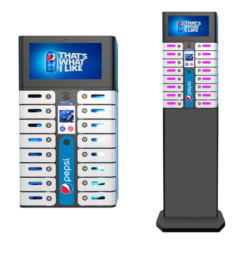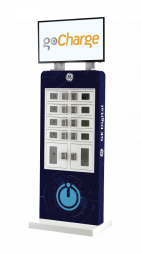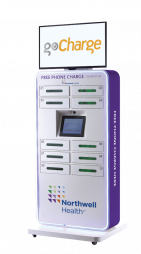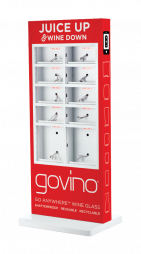How to Run Your Business From a Phone or Tablet
Gone are the days of outdated tower PCs, here’s how to get your small business working with your mobile devices. We’ve got advice for everyone from the dog-walker-for-hire to the tech start-up founder.
Ask anyone who worked in IT in the last two decades and they’ll tell you that getting new hires set up typically involved scrounging a repurposed PC and monitor; setting up an account on the corporate network; and crawling under a desk to set up the workstation. How times have changed. Gone are the days when employees will put up with an outdated tower PC. These days, companies (particularly smaller businesses and start-ups) may give a new employee a laptop—but that is increasingly the extent of company-issued hardware. New employees have very strong ideas about the hardware they want to use (and that they are skilled at using) and it’s likely to include a mix of laptops, tablet, and cell phones. The business user’s demand has shifted from, “Give me the tools I need to get my work done” to “Here are the tools I use. How do I get my work done with them?”
Mobile Devices: Near-Perfect Business Tools
The smart IT person realizes that changing to accommodate this new demand is not just a matter of making users happy; it’s also just plain smart. Why? Because, properly implemented mobile devices can be near-perfect end user tools.
First, mobile devices are ubiquitous. Just about everyone (particularly anyone who has a job) owns at least one, whether it’s a smartphone, tablet, or notebook.

Second, the extreme portability of mobile devices means employees and business owners are unfettered from the workstation and can work at anytime, from anywhere.
Third, they give the ultimate return on investment as far as business tech hardware goes. Unless the business has to adhere to some sort of government or industry compliances, businesses may not even have to buy mobile devices, because employees often want to use their own personal devices for work. If a business does decide to assign mobile devices, they are often a much smaller investment than traditional workstations.
Centralize Your Data
To really leverage the awesomeness of “anywhere, anytime” access to your data from mobile devices, you need to make your data accessible. “Accessible” means that your data needs to reside not on the C drive of the old Windows XP machine under your desk, but rather on some secure location to which your business partners, employees, and customers can connect. This, of course, is where cloud storage comes in.
Arguably the most widely used cloud services are those used for data storage. If you are not already using a service such as Box.com eFileCabinet, or Microsoft’s OneDrive, you should look into them. You can even get free storage through Google Drive—which you already have access to if you use Google apps or Gmail.
If you have data residing on multiple computers that could be a hassle to place online (maybe because it’s a lot of data) but you still would like to provide remote access to that data, you can look into any number of file-syncing services. These allow you to have multiple instance of the same data on each of the machines; if you change the data in one location, the service updates it on all the locations. One example is SugarSync, which can sync data among your machines, keeping everything up to date and remotely accessible.
And cloud services aren’t just for data, either. You can actually create networks of devices that are scattered all over the world via cloud-based services such as Pertino. Pertino is a network cloud service that allows you to add any device, or anyone else’s device, to a shared network in the cloud. It’s great for creating a business network that incorporates offsite workers, telecommuters, external partners, and their mobile devices. Best of all (from the small-business perspective), it’s tailored to those who are not tech gurus, and offers a sophisticated, yet simple-to-deploy way to create a centralized network for data sharing.
In a nutshell, there is no shortage of ways to get your data centralized and accessible from anywhere at any time.
Communication
One of the biggest benefits of bringing mobile into a business is instant communication. At a recent small business summit hosted by Brother in New York City, several small business owners gathered to discuss the impact of mobile on their business. One realtor gave others pause when she declared that she won’t even conduct business with others who are not onboard with mobile communications—mobile is just that important for the success of her business.

We already text and email so much with our phones that many of us rarely make calls anymore! You now have the option to conduct business meeting on your mobile devices with services such as Skype, GoToMeeting and the many other mobile conferencing apps.
Of course, the fact that you can instantly access and contribute to social media from your mobile devices is also a big benefit for your business. Don’t think that Instagram, Vine, and Twitter are just for kids and celebrities. Recent studies show that 88 percent of small business owners list Facebook as their top social media channel for marketing. And 63 percent of small businesses actively use digital platforms to market their wares and services. If you aren’t using these services from the mobile devices that you always have on hand, you are putting your business at a disadvantage.
Productivity
Many businesses have balked at the idea moving away from traditional desktop because there weren’t many good alternatives to having productivity powerhouse, Microsoft Office running locally on a desktop. Guess what? That’s no longer true for most productivity needs.
One of the biggest uses of mobile that separates business use from personal use is document management. Businesses documents need to be not only accessible, but viewable, and often editable. Microsoft Office for iOS, Polaris Office 5 (for iPad), or OfficeSuite Pro for Android are just a few of the productivity apps downloadable for you to get your document work done. Of course, tablets can be outfitted with a keyboard and mouse and transformed into mini-workstations for all of your document editing needs.
Other apps help you manage team projects. One great app we’ve reviewed (and use!) is team project management app Asana, which provides mobile apps and access via a Web browser.
For several years, many balked at moving away from traditional desktop because there weren’t many good alternatives to having productivity powerhouse, Microsoft Office running locally on a desktop. Guess what? That’s no longer true for most productivity document needs.
Security
Unfortunately, it’s not just business owners who are aware of how important and ubiquitous mobile platforms have become. Hackers and digital malcontents are noticing too, and they have begun to shift their attention away from traditional PCs and PC operating systems in favor of often less well-protected mobile gadgets. As you make the shift to conducting more of your business on mobile, you must look into the abundance of security solutions for mobile platforms.
There are a couple of fronts you need to secure when it comes to mobile devices. Malware is one concern. Some products tested in the PCMag Labs to combat mobile malware include Bitdefender Mobile Security and Antivirus, avast! Mobile Security & Antivirus, and McAfee LiveSafe are just a few of the security apps that can protect your device from malware.

However, malware is not (yet) the biggest mobile threat. Can you guess what is? Losing your device. In an interview with PCMag’s SecurityWatch team, Mikko Hypponen, chief research officer at F-Secure, said, the biggest threat to Android users is theft or loss. He reported that F-Secure had run a study and found that, “1 in 10 said they had their phone lost or stolen.”
Thankfully, most security apps allow you to remotely wipe a lost or stolen device. Of course, both Google and Apple provide services to help you track down a misplaced device. These are important tools, particularly if you are using your gadgets for business. Most of the mobile security suites mentioned above also offer some sort of remote lock and wipe capabilities, as well as alarms you can trigger remotely.
You should also look into putting a password manager on all your devices. Whether your device is actually stolen or someone nosey picks it up off your desk to a little spying, you’ll want to make sure that you have good, strong, unique passwords for all your online accounts. And of, course, the more productivity, cloud-based storage services and so on that you use for your business, the more logins and passwords you will need to manage. The only way you can hope to have maintain good passwords is to use apassword manager. To beef up password security and to avoid forgetting your passwords, look to apps like Dashlane and LastPass.
Other Considerations…
We’ve barely begun to cover all the reasons to go mobile with your business, and the ways you can begin. As your business needs grow, you may be surprised at the level of sophistication already available via mobile for a vast number of business uses. Whether it’s mobile point-of-sale solutions or VPN services or custom applications, the only limit to making your business mobile-friendly (and mobile-powerful) is your willingness to adopt new mobile technology and services.
This post is originally from PCMag.














